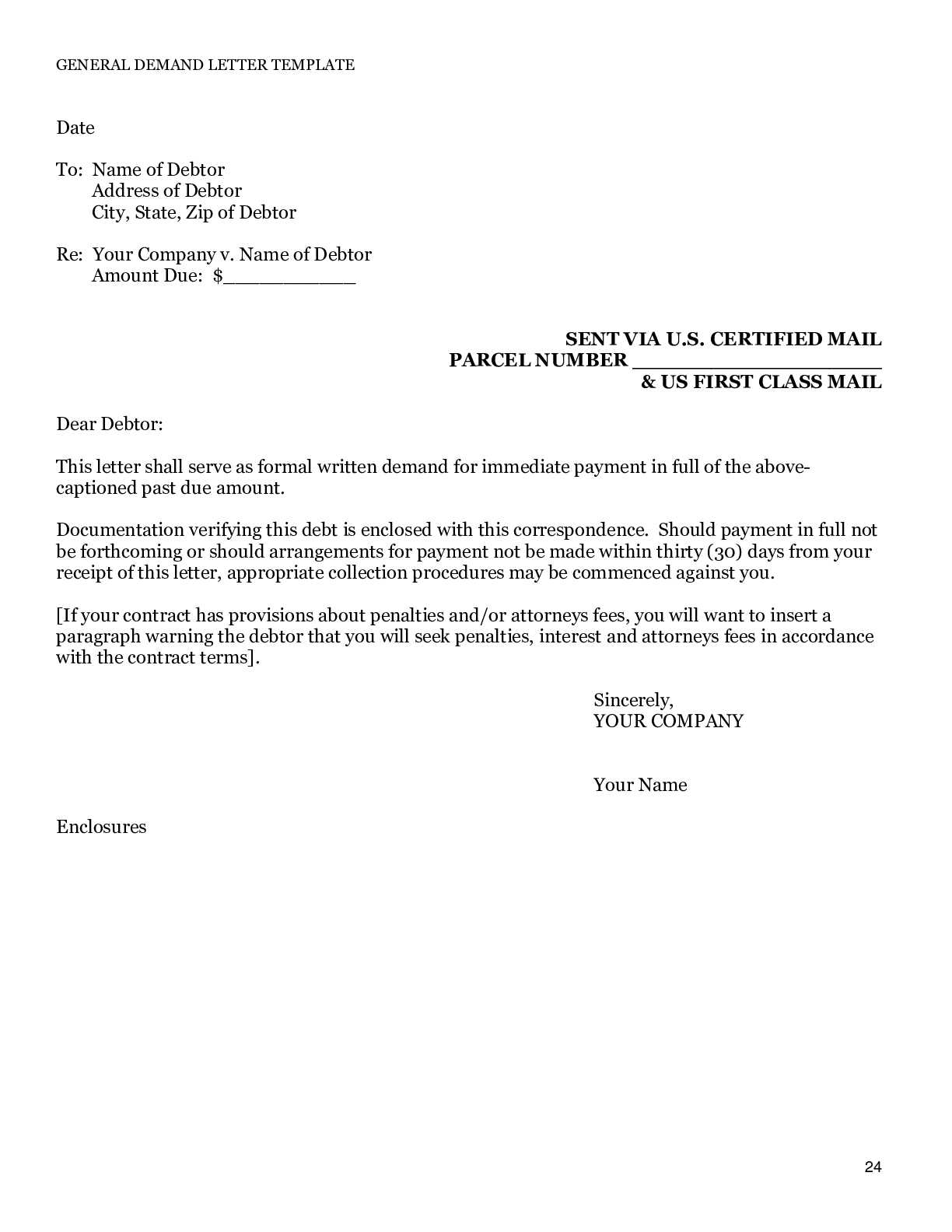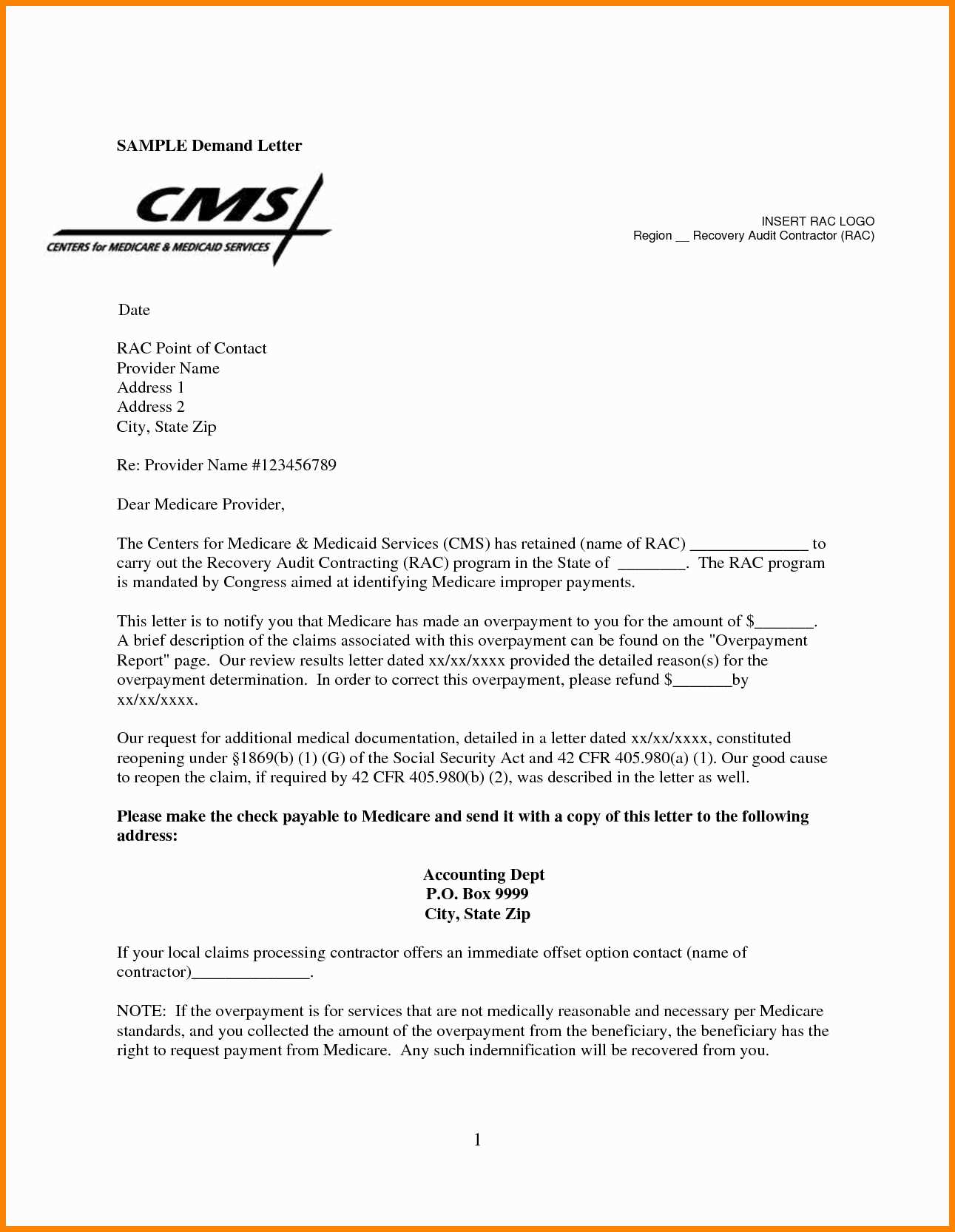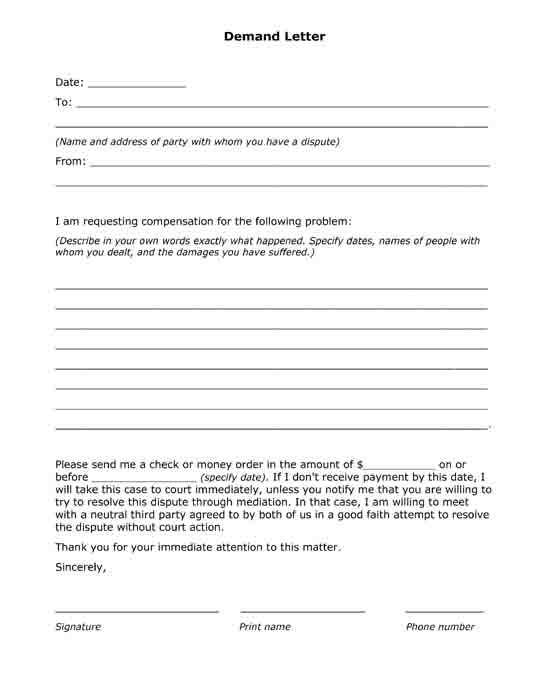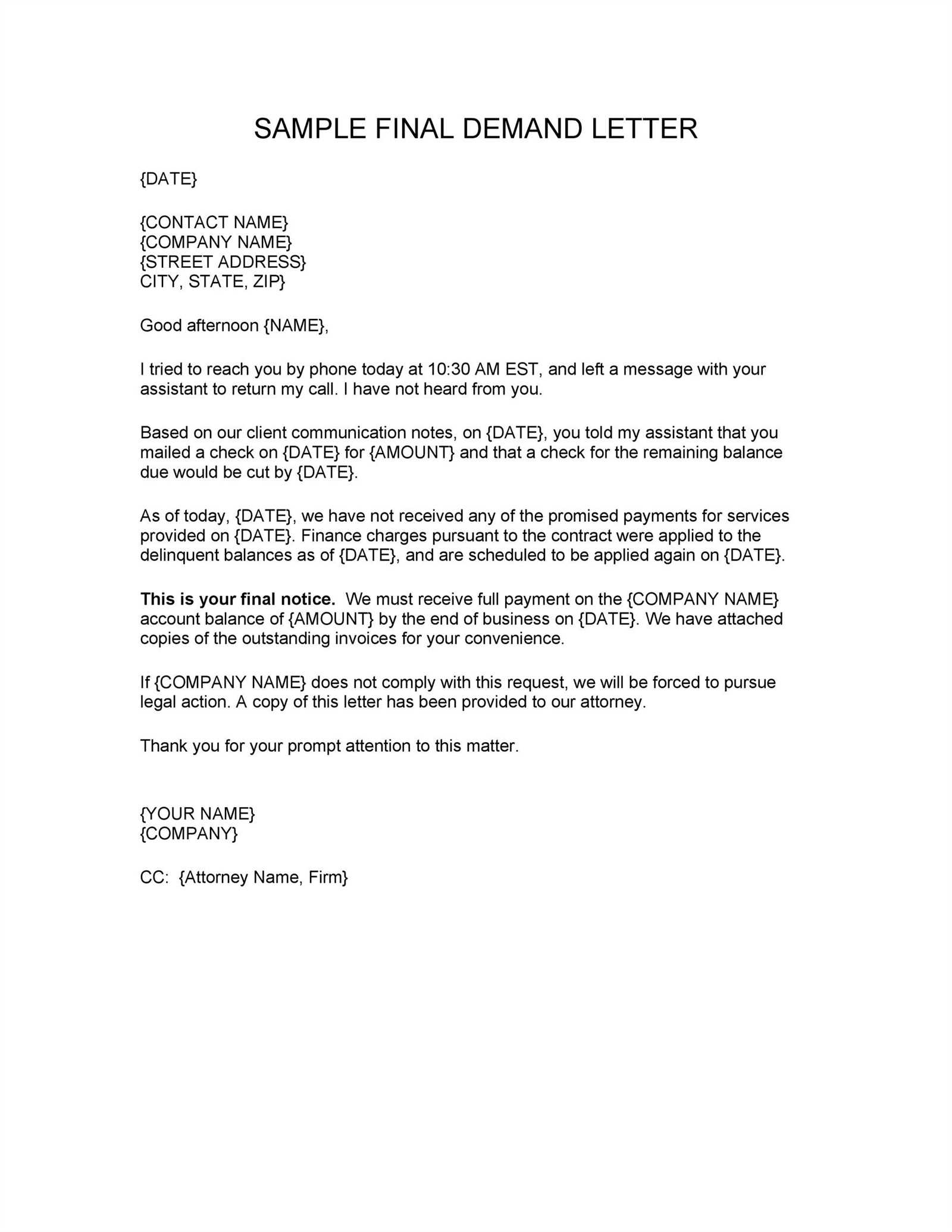California Demand Letter Template for Legal Disputes

When a disagreement arises that requires legal action, it’s important to communicate clearly and professionally. A well-constructed written notification can serve as an essential first step toward resolution, outlining the issue at hand and offering a structured request for resolution. This approach can potentially avoid further escalation to formal legal proceedings.
Crafting this communication involves more than simply stating your case. It requires a structured format to ensure that the recipient understands the seriousness of the situation while offering them a clear path to address the concern. The key is to be precise, polite, and firm in your wording.
Whether it’s for an unpaid debt, breach of contract, or other civil matters, understanding the proper way to express your demands can greatly increase the chances of an amicable settlement without going to court. This guide will walk you through essential points for creating an effective message that carries legal weight.
What is a Legal Notice
A legal notice is an official written communication sent by an individual or entity to inform the recipient about a grievance or unresolved matter. It is used to formally notify the other party of the issue at hand and request corrective action or resolution within a specified time frame.
This type of correspondence is often the first step before pursuing more formal legal actions, such as filing a lawsuit. It serves as a method to express the seriousness of the situation while giving the recipient an opportunity to address the issue voluntarily. The tone should balance firmness with professionalism, ensuring that the message is clear and understood.
Key Elements of a Legal Notice Format
To ensure clarity and effectiveness, certain components should be included when drafting a formal request. These elements make the communication structured and ensure that it delivers the intended message clearly, leaving little room for misunderstanding.
Introduction and Identification
The document should begin with a clear introduction, identifying the sender and the recipient. It’s crucial to state the purpose of the correspondence and provide a brief overview of the issue, making it easy for the recipient to understand the context immediately.
Detailed Description of the Issue
Next, the main body of the communication should thoroughly outline the problem. Include dates, specific actions, and any relevant facts or agreements that led to the dispute. Providing clear, concise details strengthens the message and supports any future actions that may be taken.
Steps to Write a Legal Notice

Creating an effective communication to resolve a dispute involves several important steps. It’s essential to approach the writing process methodically to ensure that the message is clear, professional, and legally sound. Below are the key steps to follow when drafting this type of document:
- Identify the Parties Involved: Clearly state who is sending the communication and who is receiving it. Include full names and contact details for both parties.
- State the Issue: Describe the situation in detail, including the cause of the conflict or the actions that have led to the disagreement. Be specific and factual.
- Specify the Desired Outcome: Clearly define what you expect from the recipient. Whether it’s payment, action, or another form of resolution, it should be explicitly stated.
- Set a Timeframe: Mention the date or time period within which you expect the issue to be resolved. This deadline provides clarity on when further action might be necessary.
- Describe Consequences: Outline the potential actions that could be taken if the issue is not resolved. This could include legal proceedings or other steps.
By following these steps, the recipient will have a clear understanding of the issue, your expectations, and the potential consequences, making it easier to reach a resolution.
Common Mistakes to Avoid

When crafting formal correspondence to resolve disputes, it’s essential to avoid certain errors that can undermine the effectiveness of the message. These mistakes can lead to confusion, delay in resolution, or even legal complications. Below are some of the most common pitfalls to watch out for when drafting your communication.
| Mistake | Explanation |
|---|---|
| Vague Language | Using unclear or ambiguous terms can make it difficult for the recipient to understand your position or the seriousness of the issue. |
| Overly Aggressive Tone | A confrontational or hostile tone can escalate the situation instead of encouraging a cooperative resolution. Keep it professional and calm. |
| Ignoring Relevant Facts | Failure to include key details, such as dates, agreements, or actions taken, weakens your case and may cause confusion. |
| Missed Deadlines | Not specifying a clear deadline for action can leave the recipient unsure of when they need to respond, leading to delays. |
| Failure to Proofread | Typos or errors in the document can make it look unprofessional and decrease the impact of the message. Always review carefully. |
Avoiding these common mistakes ensures that your message is clear, professional, and more likely to lead to a resolution. By being precise and thoughtful in your approach, you increase the chances of a favorable outcome.
When to Send a Formal Notice
Determining the right moment to send a formal communication can be crucial in resolving disputes effectively. Sending it at the appropriate time ensures that your message carries the necessary weight and prompts the recipient to take the matter seriously. Understanding the timing of this communication is key to achieving a timely resolution without escalating the situation unnecessarily.
Before Taking Legal Action
If informal attempts to resolve the issue have failed, it may be time to escalate matters. A written communication should be sent before pursuing legal action, as it provides the recipient with an opportunity to address the situation and avoid further complications. This often serves as a final chance to settle the matter without involving the court system.
After Attempting Informal Resolution
Before taking formal steps, ensure that you’ve made reasonable efforts to resolve the matter informally. If you’ve already discussed the issue with the recipient, sent reminders, or tried mediation, and no resolution has been reached, a formal communication should be sent to formalize the request and show the seriousness of the situation.
Timing is critical when sending this type of message. Waiting too long may weaken your position, while acting too hastily could lead to unnecessary tension. Sending it at the right time balances professionalism with the urgency of resolving the issue.
Legal Considerations in California

When preparing a formal communication to address a legal matter, it’s important to be aware of the specific legal frameworks that apply in your jurisdiction. Understanding local laws helps ensure that the document adheres to the required standards and avoids potential legal pitfalls. In regions such as California, there are particular rules and regulations to keep in mind when engaging in dispute resolution through written communication.
Local Laws and Regulations: In California, the legal landscape may impose particular requirements on the content, format, or delivery of official notices. These rules ensure that the recipient has a clear understanding of the issue and is provided with an adequate opportunity to resolve the matter before more severe legal actions are taken.
Statute of Limitations: It’s also essential to be mindful of the statute of limitations for your claim. Depending on the type of dispute, there may be a time limit within which you must act. Failing to send the formal communication within this timeframe can impact your ability to take further legal action.
Additionally, consider the potential consequences of sending this type of correspondence, including the possibility of a legal response or counterclaim. Taking the time to understand these legal considerations can strengthen your position and increase the likelihood of a successful resolution.